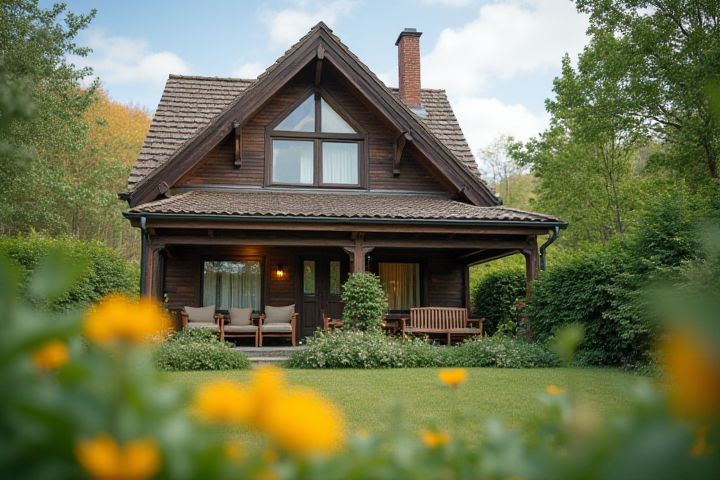
To effectively cool your house in summer, consider installing energy-efficient ceiling fans to circulate air and create a comfortable breeze. Utilizing reflective window treatments can significantly reduce heat gain from sunlight, keeping your indoor space cooler. Furthermore, maintaining your HVAC system with regular filter changes ensures optimal performance, allowing for efficient cooling. You might also want to seal any gaps around windows and doors to prevent warm air from entering your home, contributing to a more stable indoor temperature. Lastly, incorporating outdoor shading elements like awnings or trees can diminish the amount of direct sunlight hitting your home, further enhancing your cooling efforts.
How To Cool A House In Summer
Use fans for air circulation
Using fans effectively enhances air circulation in your home, significantly lowering perceived temperatures. Ceiling fans can create a wind-chill effect, making you feel up to 4 degrees cooler, which is particularly handy on hot days. Oscillating or box fans placed strategically in windows can draw in cooler outside air during the evening while exhausting warmer air. For optimal results, reverse ceiling fan blades during summer, directing airflow downward to keep your living spaces comfortable and breezy.
Close blinds or curtains during peak sun
Close blinds or curtains during peak sun hours, typically between 10 a.m. and 4 p.m., to reduce heat gain in your home. Choosing light-colored or reflective window coverings can enhance energy efficiency by reflecting sunlight away from interior spaces. According to the U.S. Department of Energy, this strategy can lower indoor temperatures by up to 20 degrees Fahrenheit. For optimal results, also consider using energy-efficient blinds or blackout curtains that offer superior insulation.
Install reflective window film
Installing reflective window film can significantly reduce heat gain in your home during the summer months. This specialized film reflects solar energy away from your windows, thereby lowering indoor temperatures and enhancing comfort. Reflective window films can block up to 80% of incoming solar heat while also providing UV protection, which helps prevent fading of your furniture and flooring. When applying the film, ensure proper installation for maximum effectiveness, considering professional help if needed for a flawless finish.
Seal gaps and cracks for insulation
Sealing gaps and cracks in your home can significantly improve insulation, preventing warm air from entering and cool air from escaping. Use high-quality caulk to fill in spaces around windows, doors, and any structural gaps, ensuring a tight seal that can reduce energy costs by up to 25%. Weatherstripping can be applied to movable components like doors and windows, enhancing your home's overall efficiency. Investing time in these improvements not only keeps your living space cooler during summer but also enhances comfort year-round.
Use energy-efficient appliances
Using energy-efficient appliances can significantly lower your cooling costs during summer. Consider investing in ENERGY STAR-rated air conditioners that consume up to 50% less energy than conventional models. You can also use programmable thermostats, which can reduce your cooling expenses by automatically adjusting temperatures when you're not at home. By incorporating ceiling fans, you can enhance air circulation, making your space feel cooler while allowing you to set your air conditioner a few degrees higher, saving additional energy.
Cook outdoors or use microwave
Cooking outdoors or using a microwave can significantly reduce indoor heat during summer. Grilling outside not only keeps your kitchen cooler but also adds a delightful smoky flavor to your meals. Microwaves use less energy than conventional ovens and emit less heat, making them a practical choice for quick meals. By taking advantage of these methods, you can maintain a comfortable indoor temperature while enjoying delicious food.
Utilize natural ventilation at night
Utilizing natural ventilation at night can significantly cool your house during summer months. Open windows in the evening to allow cooler air to flow in, creating a refreshing cross-breeze that enhances indoor comfort. Strategically placing box fans near windows can help circulate this cool air more effectively, pushing out warmer air trapped inside. Remember to close the windows and blinds during the day to prevent heat from entering and to maintain the cooler nighttime temperatures.
Plant shade trees or install awnings
Planting shade trees around your home can significantly lower indoor temperatures by blocking direct sunlight, reducing the heat absorbed by your walls and windows. Strategically placed awnings over windows and doors can provide additional protection from the sun while enhancing your home's aesthetic. Both options not only promote energy efficiency but also contribute to lower cooling costs during hot summer months. Incorporating these natural elements into your landscaping creates a more comfortable outdoor living space as well.
Apply a roof cooling coat
Applying a roof cooling coat can significantly reduce indoor temperatures during the summer. This reflective coating, typically made of elastomeric silicone or acrylic, can lower roof surface temperatures by up to 30 degrees Fahrenheit. A well-applied roof cooling coat can also enhance energy efficiency, potentially lowering air conditioning costs by 10-30%. Regular maintenance may extend the life of the coating, ensuring optimal performance for 5-10 years.
Limit use of heat-generating electronics
Limit the use of heat-generating electronics to maintain a cooler indoor environment during summer months. For instance, replacing incandescent bulbs with energy-efficient LEDs can significantly reduce heat output; these bulbs emit about 75% less heat. Turn off appliances such as computers, televisions, and ovens when not in use, as they can raise indoor temperatures substantially. Consider using power strips to easily shut off multiple devices at once, enhancing your efforts to keep your home comfortably cool.
